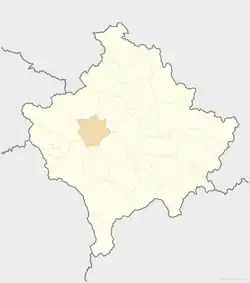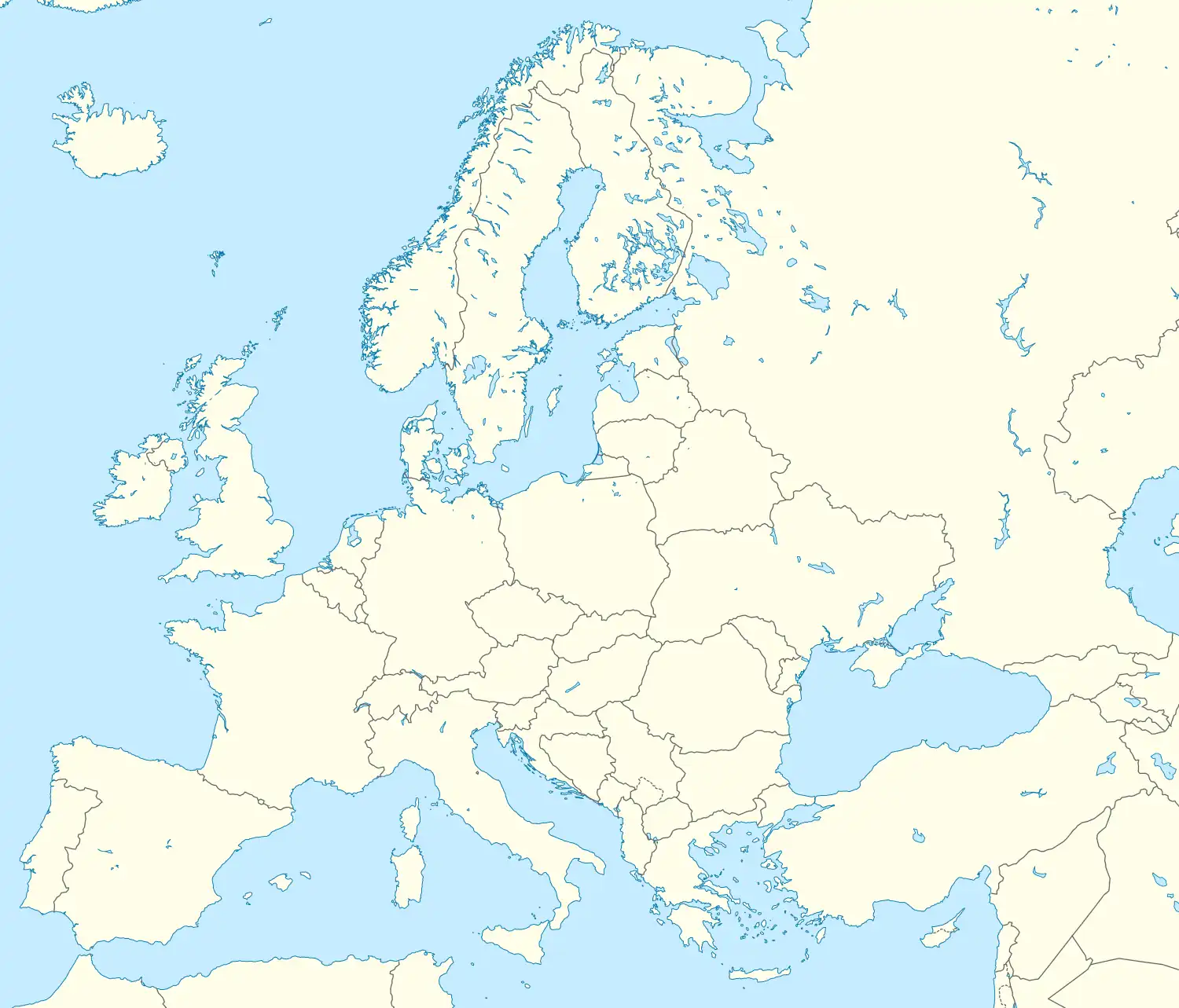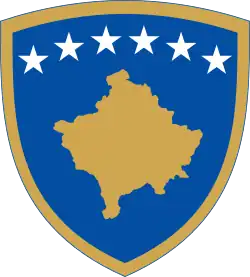Klina
Klina (definite form: Klinë; Serbian Cyrillic: Клина) is a town and municipality located in the District of Peja of north-western Kosovo. According to the 2011 census, the town of Klina has 5,542 inhabitants, while the municipality has 38,496 inhabitants. It is located at the confluence of the river Klina into the White Drin. A symbol of Klina are the Mirusha Waterfalls.
Klina
| |
|---|---|
Town and municipality | |
From the top, Town Centre, Church of St. Peter, Stone Bridge | |
 Emblem | |
 Klina  Klina | |
| Coordinates: 42°37′N 20°34′E | |
| Country | Kosovo |
| District | District of Peja |
| • Municipal | 309 km2 (119 sq mi) |
| Population (2011) | |
| • Urban | 5,542 |
| • Municipal | 38,496 |
| • Municipal density | 120/km2 (320/sq mi) |
| Time zone | UTC+1 (CET) |
| • Summer (DST) | UTC+2 (CEST) |
| Postal code | 32000 |
| Area code | +381 |
| Car plates | 03 |
| Website | kk.rks-gov.net/kline |
History
During early Middle Ages, Porphyrogenitus mentions the urban center of Desstinik, today Dërsnik, where important archeological discoveries of Roman period were made in August 2013, described as: ...the most important discovery of the past few decades to have been made in Kosovo in the area of archaeology.[1]
Economy
There is one bauxite mine operating on the territory of Klina - Grebnik mine.
Demography
| Year | Pop. | ±% p.a. |
|---|---|---|
| 1961 | 27,153 | — |
| 1971 | 42,351 | +4.55% |
| 1981 | 54,539 | +2.56% |
| 1991 | 52,266 | −0.42% |
| 2011 | 38,496 | −1.52% |
According to the last official census done in 2011, the municipality of Klina has 38,496 inhabitants. Based on the population estimates from the Kosovo Agency of Statistics in 2016, the municipality has 39,759 inhabitants.
The ethnic composition of the municipality:
| Ethnic composition | |||||||||||||
| Year/Population | Albanians | % | Serbs | % | Montenegrins | % | Roma | % | Total | ||||
|---|---|---|---|---|---|---|---|---|---|---|---|---|---|
| 1961 | 16,756 | 66.75 | 7,378 | 27.17 | 1,372 | 5.05 | 80 | 0.29 | 27,153 | ||||
| 1971 | 32,897 | 78.04 | 7,864 | 18.57 | 1,157 | 2.73 | 118 | 0.28 | 42,351 | ||||
| 1981 | 45,594 | 83.60 | 6,829 | 12.52 | 973 | 1.78 | 798 | 1.46 | 54,539 | ||||
| 1991 | 43,248 | 82.75 | 5,209 | 9.97 | 621 | 1.19 | 1,278 | 2.45 | 52,266 | ||||
| January 1999 | 55,000 | 78.6 | 10,000 | 14.3 | 5,000 | 7.1 | 70,000 | ||||||
| 2011 | 37,216 | 96.7 | 98 | 0.25 | - | - | 78 | 0.2 | 38,496 | ||||
| Ref: Yugoslav Population Censuses for data through 1991, Organization for Security and Co-operation in Europe estimates for 1999 and 2006 | |||||||||||||
In September 2014, 12 Egyptian families returned to Klina having spent the last 15 years displaced in Podgorica, Montenegro. The families moved straight into a newly constructed neighbourhood as part of project helping refugees from the Kosovo War return to Kosovo.[2]
Notable people
- Anton Berisha, Kosovo-Albanian folklorist and scholar
- Sadik Rama Gjurgjeviku, Kosovo-Albanian guerrilla fighter
- Hatidža Beriša, Serbian university professor
References
- Archaeological discoveries in Dresnik of Klina, the most intriguing discovery of the past few decades, Ministry of Culture, Youth, and Sport of Kosovo, 2013-08-15
- "Egyptians return to Kosovo after 15 years of displacement". Shanghai Daily. 15 September 2014. Retrieved 16 September 2014.
External links
- Municipality of Klina – Official Website



